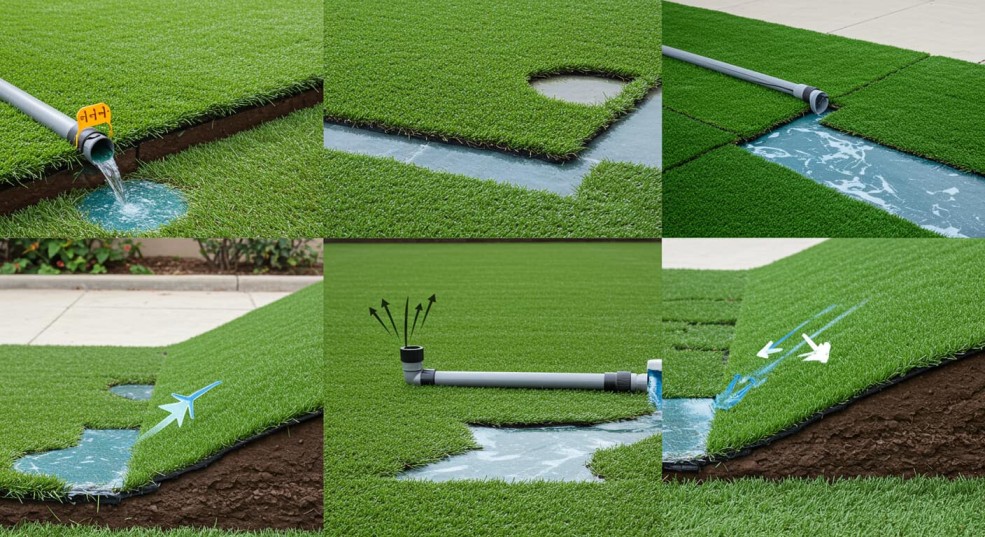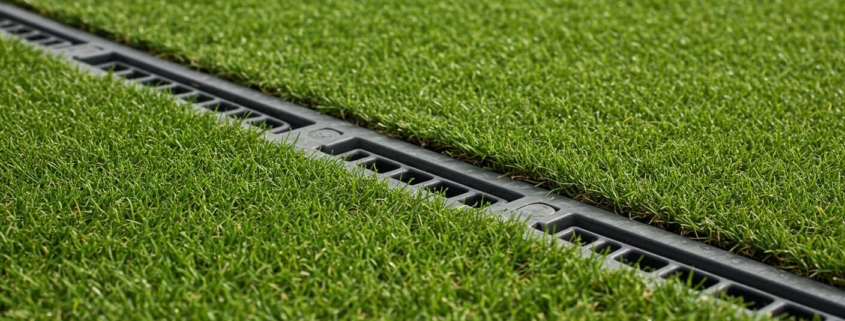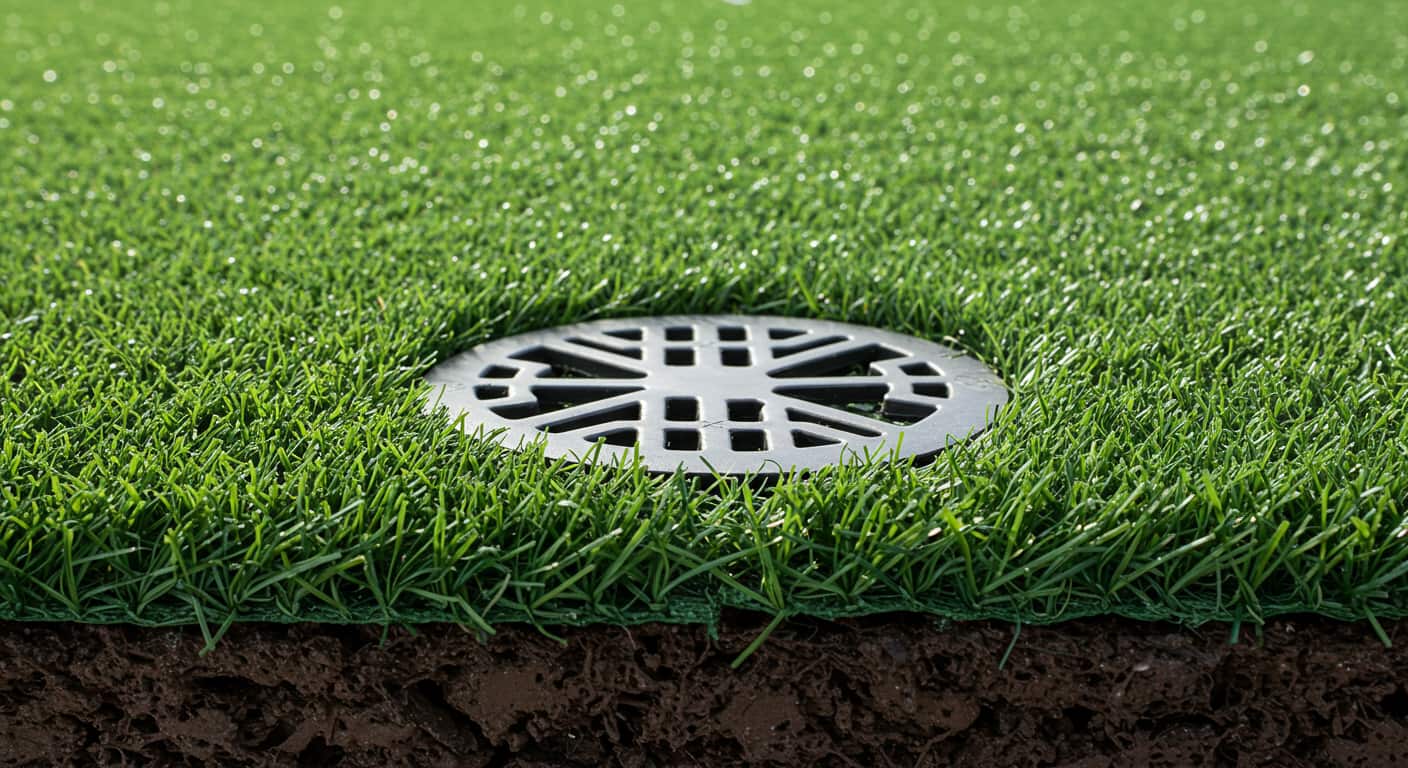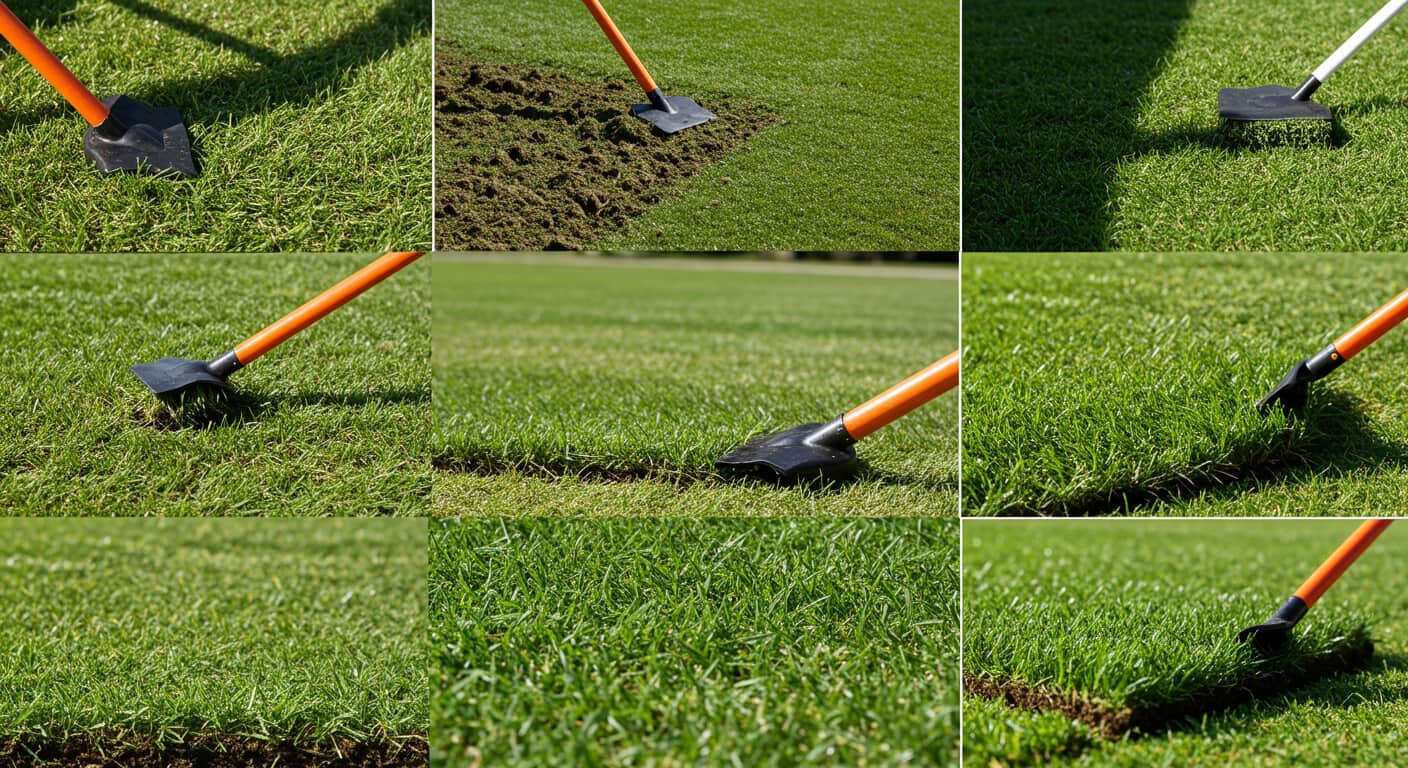What to Know About Turf Drains & Arizona Flash Floods!
Wanna know how Arizona’s weather can get so extreme? One day you’re baking under a relentless sun, and the next, you’re dodging flash floods from a sudden monsoon downpour. It’s like a rollercoaster ride. The flash floods can turn a dry yard into a swamp in just minutes, and if you’ve got artificial grass in your backyard, you’re probably wondering how it holds up.
The secret? A rock-solid drainage system. A proper drainage system can help you keep your lawn lush, safe, and functional, no matter how extreme the water is. In this post, we’ve covered why turf drains are a big deal, how they work, and what you need to know to keep your lawn looking great through Arizona’s wild weather swings. Read on to know.
Why Drainage Matters for Artificial Grass in Arizona?

You may be thinking, why drainage is such a big deal for artificial grass? Well, it’s because synthetic turf doesn’t look pretty – it’s designed to let water flow through. Quality turf has a perforated backing that lets water pass at rates up to 30 inches per hour or more, way faster than natural grass, which can turn into a muddy mess. But here’s the thing: the turf alone isn’t enough. The ground underneath plays a huge role.
Arizona’s soils can be tricky. Clay-heavy soils such as those found in areas such as Phoenix absorb water like a sponge and slow down the drainage process. Sandy desert soils drain well, and can erode when not stabilized. The bad drainage may result in puddles, torn turf, or even water crawling into the house when the monsoon rains hit. Drains keep your lawn in use, safe, and looking good, regardless of the downpour.
How Turf Drains Work in Synthetic Turf Installation Services in Arizona?
So, how does artificial grass handle all that water? It’s all about teamwork between a few key parts:
- The Backing: Think of the turf’s backing as a sieve. It has tiny holes, usually spaced a few inches apart, that let water slip through fast. Some modern turfs are fully permeable, perfect for Arizona’s heavy rains.
- The Infill: That sandy stuff between the grass blades isn’t just for show. Infill, such as silica sand, assists the water to flow and maintain the turf in place. Excess or lack of this will do no good; hence, moderation is vital.
- The Sub-Base: This is the real hero. The turf is drained by a layer of crushed gravel or limestone. Installers excavate 3-4 inches of soil and substitute with this permeable substance to ensure that water flows.
- Grading and Compaction: A small slope (1-2) helps direct water off your house or areas that are in low places. Tamping the sub-base makes it hard, thus it does not move throughout storms.
Mess up any of these – like skipping the sub-base or ignoring the slope- and you’re asking for trouble. Water might pool, seams could lift, or your yard could smell funky. A solid installation makes all the difference.
Common Drainage Problems with Artificial Grass in Arizona Homes
Even great turf can hit snags if drainage isn’t done right. Here’s what can go wrong:
- Puddles After Rain: If water sits on your turf, the sub-base might be too flat or clogged with clay. This makes your yard soggy and slippery.
- Lifting Seams: Water sneaking under the turf can loosen glue, causing edges to pop up. Not only does it look bad, but it’s a tripping hazard.
- Smelly Spots: Trapped water, especially in pet yards, can breed bacteria, leading to odors. Regular cleaning helps, but poor drainage is often the root cause.
- Erosion: Flash floods can wash away a weak sub-base, leaving your turf uneven or damaged.
Routine maintenance, like rinsing and brushing, can prevent these issues. For bigger problems, professional artificial grass maintenance in AZ can get your lawn back on track.
Arizona Flash Floods: What Homeowners Should Know
The monsoon season in Arizona is during July to September and is characterized by heavy rains, which may cause inches of water within a few minutes. These flash floods are hard and fast, unlike a sprinkler, they are challenging to any yard. They can:
- Splash soil or infill and leave the base of your turf all messed up.
- Dispose of debris such as dirt or leaves, which block drainage holes.
- Flood patios, pools, or even your house, where water is pooling along the buildings.
- Make dirty, unhygienic places for the children or pets.
Synthetic turf with good drainage shines here. It allows water to pass through in a short time, leaving your yard ready to be used soon after the storm. A well-built sub-base and proper backing make sure water doesn’t stick around, protecting your outdoor space.
Best Practices for Turf Cleaning and Maintenance After Heavy Rains
After a big storm, your turf needs a little love to stay in top shape. Here’s what to do:
- Rinse It Off: Hose down the turf to clear dirt, leaves, or twigs. This keeps drainage holes open.
- Fluff the Blades: Use a rake or brush to lift flattened grass, especially in high-traffic spots.
- Check for Blockages: Look for debris clogging drainage holes, particularly in pet areas. A quick sweep or leaf blower can help.
- Tackle Odors: For smelly spots, use a pet-safe cleaner to stop bacteria buildup.
If your turf’s struggling, professional turf cleaning and maintenance services can deep-clean and check for drainage issues. Regular care keeps your lawn ready for Arizona’s next big rain.
Choosing the Right Synthetic Turf Installation Services in Arizona
Picking the right installer is crucial for a flood-proof lawn. Ask these questions:
- How do you prep the sub-base? They should remove clay soil and use permeable gravel.
- What about grading? Look for precise tools to create a slight slope for water flow.
- What’s the turf’s backing like? Go for one with lots of drainage holes or full permeability.
- Do you use weed barriers? A permeable barrier stops weeds without blocking water.
Choose a team with Arizona experience- they’ll know how to handle local soils and monsoons.
Long-Term Artificial Grass Maintenance in AZ for Drainage Efficiency
Want your turf to last 15+ years? Keep up with these tips:
- Check Seasonally: Before and after monsoons, look for clogged holes or uneven spots.
- Clean Regularly: Rinse monthly to clear dust and debris, especially in pet yards.
- Fix Small Issues: Patch seams or add infill early to avoid bigger problems.
- Get Pro Help: Annual checkups can spot and fix drainage issues before they grow.
Good maintenance prevents flooding and keeps your turf looking fresh. Skimp on it, and you might need a new lawn sooner than you think.
Bottom Line
Arizona’s crazy weather- dry one day, flooded the next-demands a lawn that can keep up. With the right turf drainage, artificial grass can handle flash floods, stay green, and make your yard a worry-free oasis. From a solid sub-base to regular cleaning, every step counts in keeping your lawn flood-proof and ready for fun. Ready to beat the monsoons? Contact Synthetic Grass Masters for expert synthetic turf installation services in Arizona with top-notch drainage solutions. Your dream yard is just a call away!








